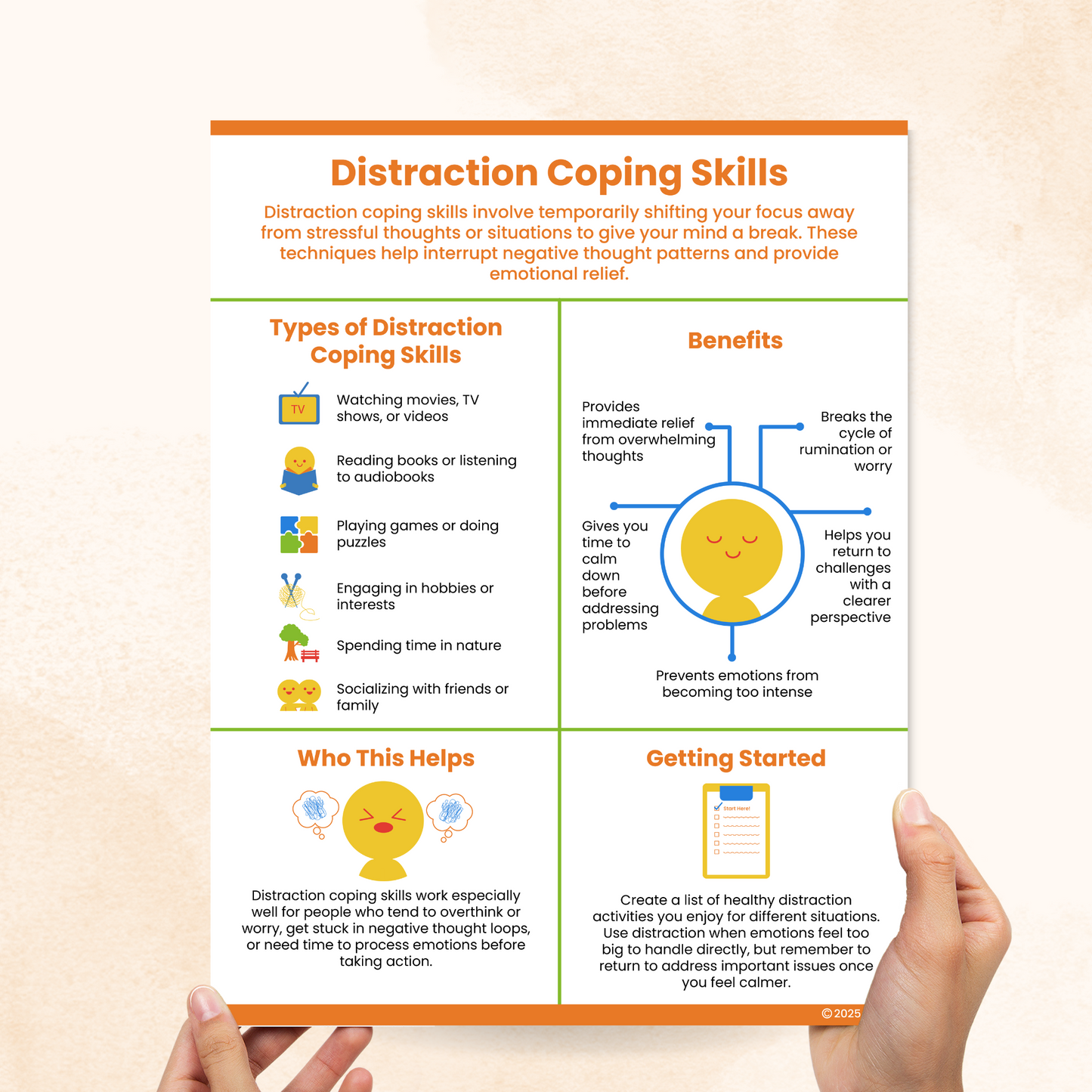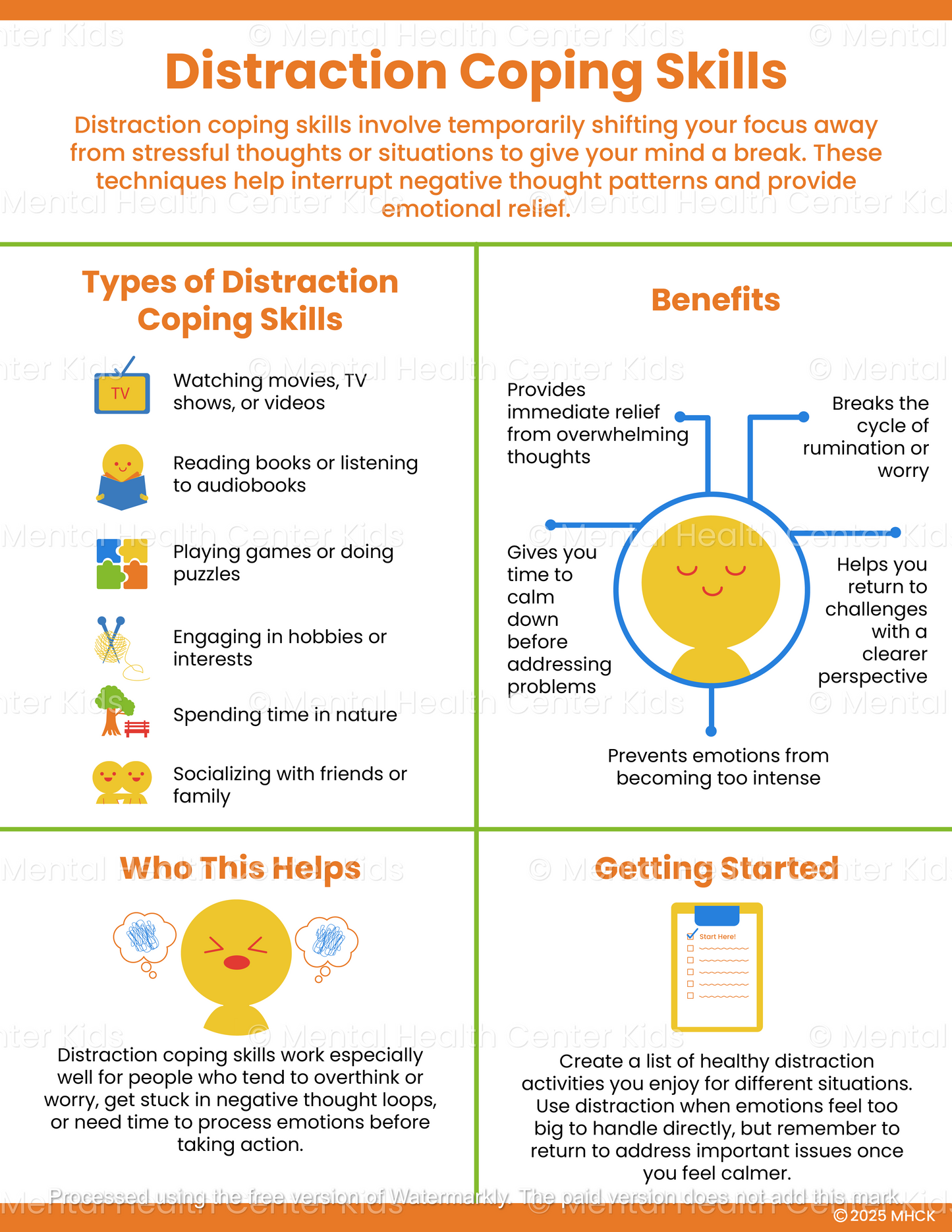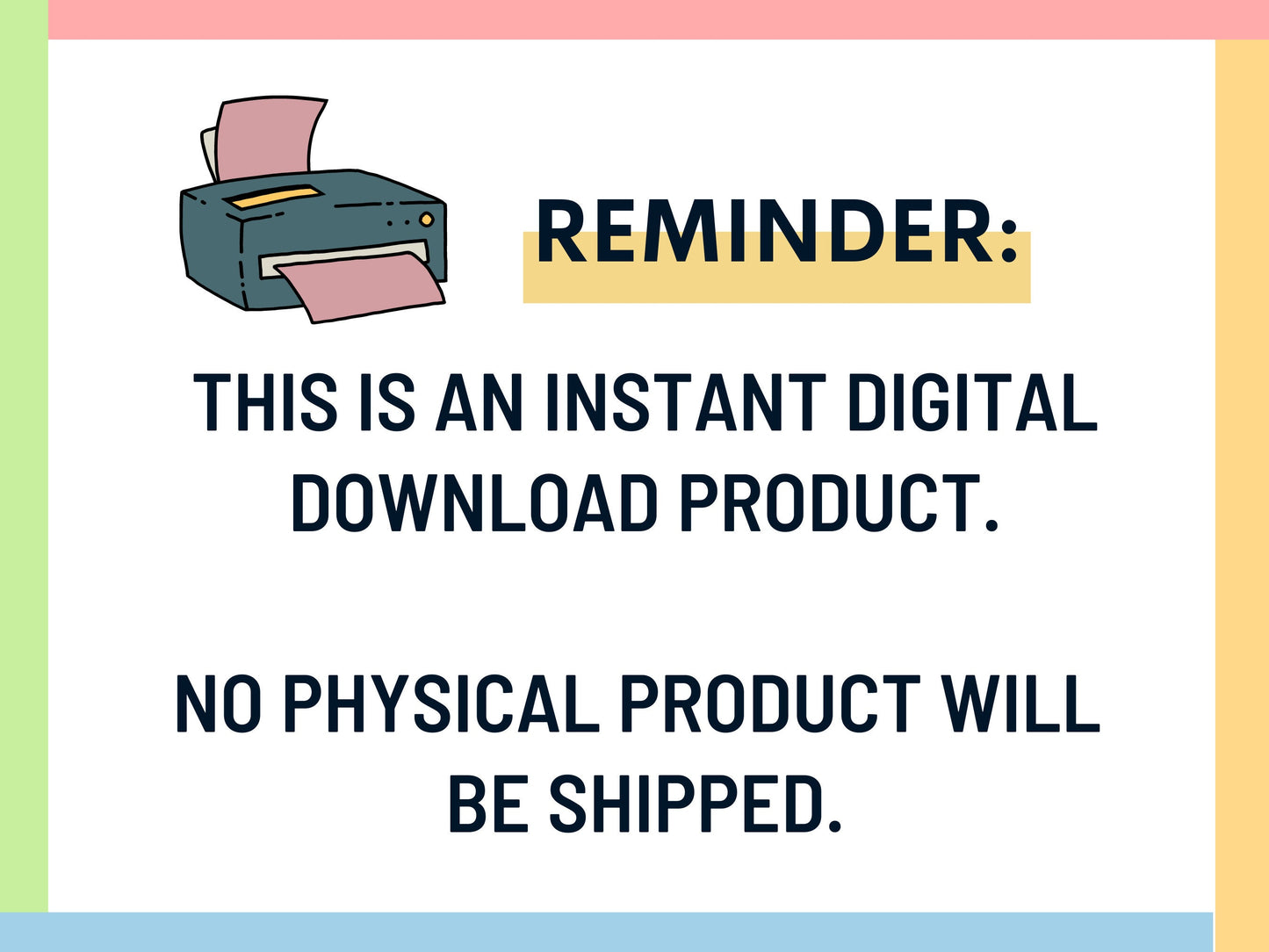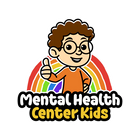Distraction Coping Skills (PDF)



Sometimes, when emotions feel overwhelming, it’s hard to think clearly and find a way forward. Dwelling on what’s wrong can only increase stress. However, stepping away to focus on something else can give space for the mind to rest and calm down.
The Distraction Coping Skills guides clients on how to briefly distract themselves, so they can return with clearer thoughts. It introduces different activities, such as watching movies, reading books, or engaging in hobbies.
Shifting their focus, even briefly, allows kids and teens to approach challenges with a calmer mind and renewed energy. Caring adults can encourage them to mix and match activities from the list or come up with their own creative ideas.
They can also use the handout as a conversation starter about the difference between avoiding problems and taking a healthy break, which helps them see that sometimes the smartest step forward is to pause.
*This item is an instant digital download. A link to download your files will be emailed to you once payment is confirmed.
Want more resources like this? Check out our full catalog of coping skills worksheets and handouts.
References:
- Mahmood, S. (2023). Positive distraction for academic engagement. https://doi.org/10.31219/osf.io/ztdv9
- Traeger, L. (2020). Distraction (Coping strategy). Encyclopedia of Behavioral Medicine, 681-681. https://doi.org/10.1007/978-3-030-39903-0_179
- Waugh, C. E., Shing, E. Z., & Furr, R. M. (2020). Not all disengagement coping strategies are created equal: Positive distraction, but not avoidance, can be an adaptive coping strategy for chronic life stressors. Anxiety, Stress, & Coping, 33(5), 511-529. https://doi.org/10.1080/10615806.2020.1755820
- Instant digital download
- File: PDF
- Size: 8.5" x 11"




